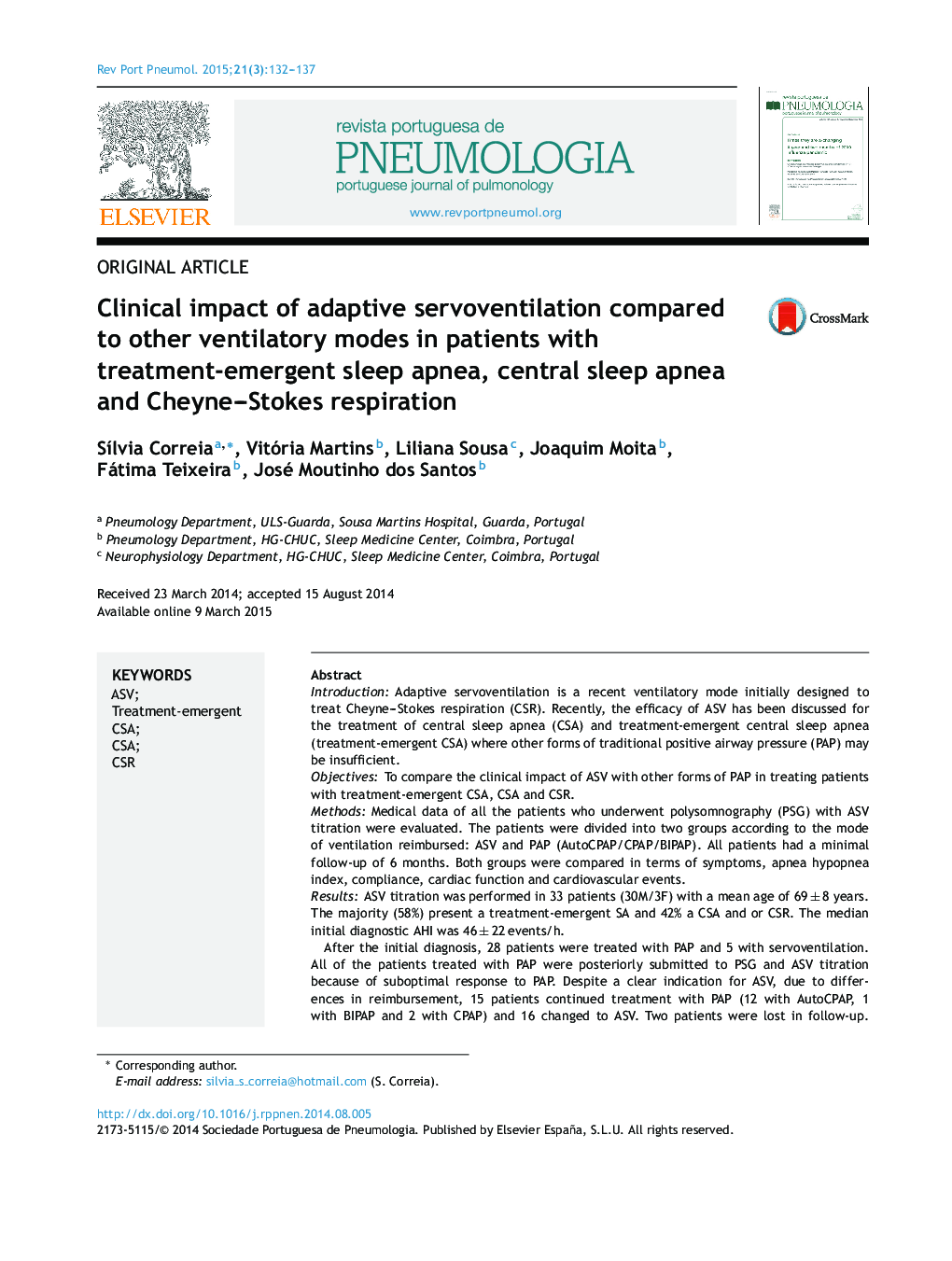| Article ID | Journal | Published Year | Pages | File Type |
|---|---|---|---|---|
| 4214669 | Revista Portuguesa de Pneumologia (English Edition) | 2015 | 6 Pages |
IntroductionAdaptive servoventilation is a recent ventilatory mode initially designed to treat Cheyne–Stokes respiration (CSR). Recently, the efficacy of ASV has been discussed for the treatment of central sleep apnea (CSA) and treatment-emergent central sleep apnea (treatment-emergent CSA) where other forms of traditional positive airway pressure (PAP) may be insufficient.ObjectivesTo compare the clinical impact of ASV with other forms of PAP in treating patients with treatment-emergent CSA, CSA and CSR.MethodsMedical data of all the patients who underwent polysomnography (PSG) with ASV titration were evaluated. The patients were divided into two groups according to the mode of ventilation reimbursed: ASV and PAP (AutoCPAP/CPAP/BIPAP). All patients had a minimal follow-up of 6 months. Both groups were compared in terms of symptoms, apnea hypopnea index, compliance, cardiac function and cardiovascular events.ResultsASV titration was performed in 33 patients (30M/3F) with a mean age of 69 ± 8 years. The majority (58%) present a treatment-emergent SA and 42% a CSA and or CSR. The median initial diagnostic AHI was 46 ± 22 events/h.After the initial diagnosis, 28 patients were treated with PAP and 5 with servoventilation. All of the patients treated with PAP were posteriorly submitted to PSG and ASV titration because of suboptimal response to PAP. Despite a clear indication for ASV, due to differences in reimbursement, 15 patients continued treatment with PAP (12 with AutoCPAP, 1 with BIPAP and 2 with CPAP) and 16 changed to ASV. Two patients were lost in follow-up.In both groups, most of patients present a treatment-emergent SA (53% in ASV group vs. 67% in PAP group) or a CSA/CSR (29.4% in ASV group vs. 20% in PAP). After ASV titration, the mean follow-up was 25 ± 14 months. Both groups (ASV vs. PAP) were similar in terms of compliance (77 ± 23% vs.88 ± 14%) and in terms of Epworth sleepiness scale score (6 ± 5 vs. 7 ± 5). There was a statistical difference in terms of residual AHI: mean AHI was 4 ± 3 in ASV group and 9 ± 3 in PAP group (P = 0.005). We found no differences in terms of left ventricular fractional shortening (ASV 33 ± 10% vs. PAP 32 ± 10%). Although no difference was observed between the 2 groups in terms of non-fatal cardiovascular events (3 events in each group), 2 fatal cardiovascular events occurred in the PAP group (sudden death).ConclusionsThese data confirm that ASV is an efficient treatment in patients with treatment-emergent CSA, CSA/CSR significantly decreasing residual AHI. In both groups, compliance rate was high and sleepiness improved. It is relevant that the 2 patients who died of sudden death were treated with PAP.
